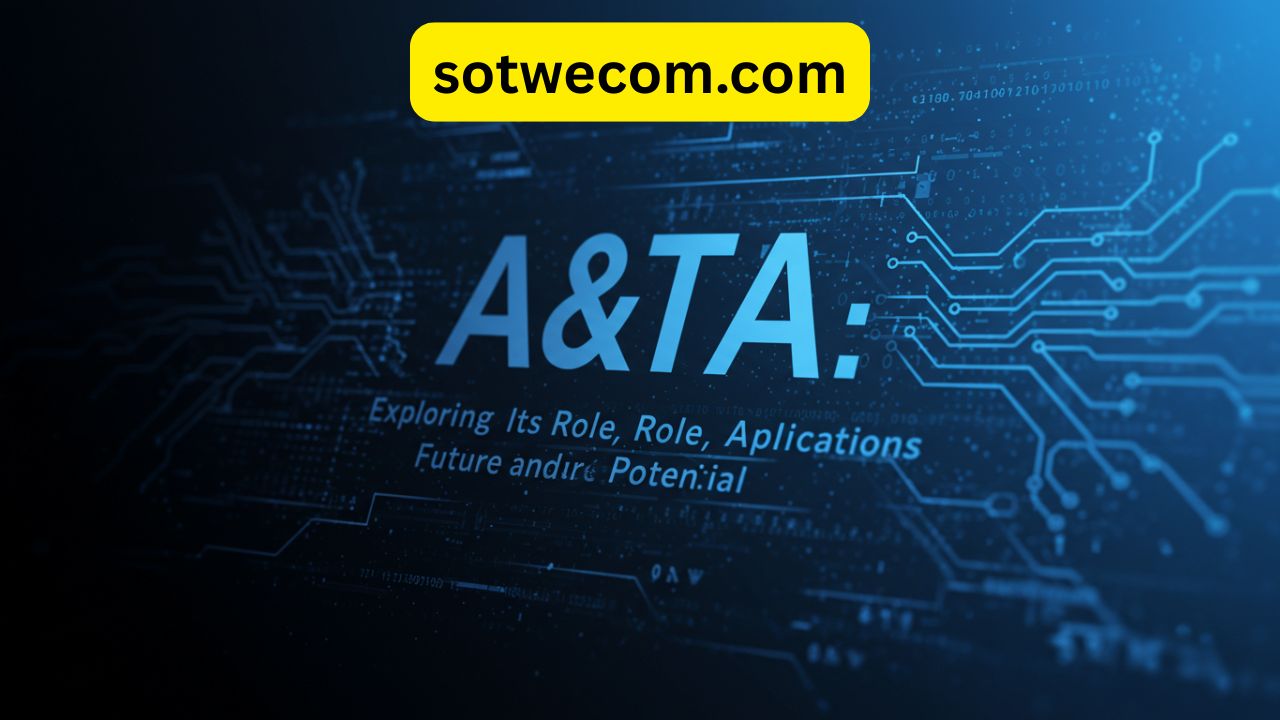A&TA: Exploring Its Role, Applications, and Future Potential
Introduction to A&TA
The modern era is defined by data-driven decisions, technical advancements, and the constant need for improvement. In this environment, A&TA has emerged as a significant concept with broad applications. While the abbreviation can represent different phrases like Analysis & Technical Assistance or Assessment & Training Applications, its core purpose remains the same helping organizations and individuals achieve efficiency, accuracy, and innovation. This article provides an in-depth look at A&TA, its uses, advantages, and future outlook.
Understanding A&TA
At its foundation, A&TA combines two essential elements: structured analysis and effective assistance. It ensures that decision-making is not based on guesswork but on reliable evaluation. At the same time, it provides technical or training support to close gaps in knowledge and performance. In practical terms, A&TA acts as a bridge between identifying challenges and applying solutions.
The Growing Importance of A&TA
Improving Productivity
Businesses today face intense competition, and A&TA helps streamline operations. By analyzing existing workflows and offering technical support, organizations can cut down inefficiencies and boost productivity.
Building Skilled Workforces
One of the critical functions of A&TA is employee training. Through guided assessments and technical training, companies ensure their workforce remains competitive and updated with the latest knowledge.
Strengthening Decision-Making
Data is valuable only when properly interpreted. With A&TA, organizations can process information effectively and make decisions that support long-term growth.
A&TA in Different Sectors
1. Education and Training
In the education sector, A&TA enhances both teaching and learning. Schools and universities rely on assessment tools and technical guidance to deliver personalized learning experiences. For students, A&TA provides access to evaluations, feedback, and learning materials that improve performance.
2. Business and Corporate Growth
Corporations use A&TA to measure employee efficiency, provide technical training, and implement support systems. For example, customer service teams benefit from A&TA through performance evaluations followed by targeted skill-building workshops.
3. Technology and IT Support
The technology industry thrives on solutions. it ensures that companies can quickly analyze system issues and provide users with the right technical support. This improves service delivery, customer satisfaction, and system reliability.
4. Government and Public Services
Even government agencies are adopting it’s frameworks. From training public service workers to analyzing policy outcomes, it helps authorities improve services and decision-making.
Benefits of A&TA
-
Greater Efficiency – Tasks are completed faster with fewer errors.
-
Enhanced Skills – Employees and learners gain updated knowledge through structured training.
-
Cost Reduction – Fewer mistakes and better resource allocation save money.
-
Customer Trust – Providing accurate technical assistance builds stronger customer relationships.
Challenges with A&TA Implementation
Despite its benefits, it is not without challenges. Some organizations lack the budget to adopt modern tools. Others face difficulties in integrating it systems with existing workflows. Additionally, resistance from employees who are hesitant about new methods can slow adoption. Overcoming these challenges requires leadership support, proper training, and investment in user-friendly tools.
The Future of A&TA
The digital transformation era is opening new opportunities for it. Artificial intelligence and machine learning are expected to play a huge role in strengthening its effectiveness. For instance, AI-powered analysis will allow organizations to make real-time decisions, while virtual technical assistance will become faster and more personalized.
In the future, it will not just be a supportive framework but an essential strategy for growth and innovation. Businesses, educators, and governments that adopt it early will have a significant advantage in efficiency, adaptability, and service quality.
How to Implement A&TA Successfully
-
Set Clear Objectives: Identify the specific problems you want it to solve.
-
Use the Right Tools: Invest in modern platforms that provide accurate analysis and effective assistance.
-
Train Employees: Ensure staff understand how to use it tools effectively.
-
Measure Progress: Continuously monitor results to see if the system is delivering improvements.
Conclusion
The role of A&TA is expanding rapidly in a world that values efficiency and innovation. From enhancing education to transforming businesses and strengthening technology services, it is proving to be a game-changer. While challenges exist, its future potential driven by AI and digital transformation makes it a vital strategy for any organization aiming to thrive. Embracing it today means building a stronger foundation for tomorrow.







